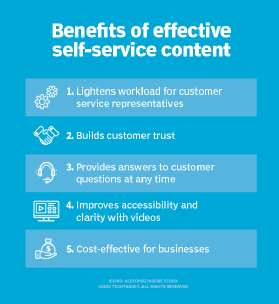5 examples of bad customer service and how to avoid them (original) (raw)
Having a plan in place to handle, or hopefully avoid, bad customer service encounters is crucial to driving customer loyalty and retention.
Organizations strive to keep customer service a top priority. In the best scenario, impeccable customer service can significantly improve an organization's growth and revenue potential.
Unfortunately, the occasional bad customer service experience is unavoidable. It isn't possible to plan for every possibility, but a strong customer service team can recognize the most common examples and have a plan in place should they come up.
What is bad customer service?
Bad customer service is any interaction between a customer and an organization that results in a negative opinion or dissatisfaction. Particularly notable instances can harm an organization's reputation, create a higher customer churn and decrease revenue.
While partially subjective, some examples of bad customer service are universally recognized, and customer service agents should know how to deal with them appropriately. The most common examples of bad customer service include the following:
- transferring customers from agent to agent;
- lack of empathy or rude behavior;
- slow response time;
- overuse of automation; and
- insufficient self-service support tools.
Recognizing bad customer service is only the first step. How does a customer service team prevent it from happening?
1. Transferring customers from agent to agent
Problem. One of the most familiar problems is a customer being shuffled from agent to agent and forced to repeat their information each time. It's one of the most frustrating situations and can quickly ruin the customer's opinion of an organization.
Solution. Generally, problems like this are structural. Customer service teams can offer first contact resolution by incorporating knowledge-sharing and the right tools. For example, an interactive voice response system such as Zendesk, GoToConnect or Five9 can gather information from the customer and automatically direct their call to the appropriate agent.
2. Lack of empathy or rude behavior
Problem. When a customer reaches out for help solving an issue, the last thing they want is to interact with a customer service agent with a poor attitude or who doesn't take the problem seriously. Some of the common examples of a lack of empathy include the following:
Making interactions feel more human can go a long way to helping deescalate a tense situation.
- generic, scripted apologies that don't sound genuine;
- an unsatisfying answer that doesn't solve the true nature of the problem; and
- the customer feels like the agent is trivializing them or their issue.
Solution. The best way to solve this problem is by properly training customer service agents in empathy. It might not seem like a lot, but making these interactions feel more human can go a long way to helping deescalate a tense situation, create a welcoming environment and drive success.
3. Slow response time
Problem. As people have grown accustomed to the instant response of text messaging and social network threads, customers increasingly expect immediate access to support agents via chat, screen sharing or video.
Solution. The answer might be as simple as having enough support staff to handle typical request volumes. Alternatively, organizations can invest in an omnichannel contact center that unifies all communications with a customer into a single platform, regardless of what method they used to contact the support team.
4. Overuse of automation
Problem. Effective self-service tools are a boon to any organization, but they can do more harm than good if implemented improperly. While a chatbot or tools that enable help desk automation can increase efficiency, they result in more confusion or reported issues falling through the cracks when poorly executed. Automation should augment human agents by expanding their access to meaningful data and enabling them to anticipate customer needs.
Solution. Solving this issue requires support executives to readjust their views of IT automation to see it primarily as a tool for improving the customer experience, not reducing support costs.

Creating an effective means for customers to self-service benefits all parties.
5. Insufficient self-service support tools
Problem. Many customers have grown accustomed to solving problems themselves with the resources made available to them. However, if the information or tools they need are not readily available, a customer may grow frustrated at relying on the business to troubleshoot what they see as their property.
Solution. The answer here requires some short-term pain in the form of upfront spending on DIY knowledge bases, customer support forums and interactive troubleshooting tools. Ultimately, these methods can produce long-term gain from reduced support requests and happy customers.
If there is a customer and business interaction, a bad experience will inevitably occur. The key is to prepare and train the customer service team to treat every customer with the same empathy and respect they would want for themselves. It might not prevent every negative experience, but it will go a long way to making the customer feel valued and heard.
Next Steps
Top 5 challenges in field service management
What does a customer service manager do?
10 sample customer service email templates
The future of customer service: 12 trends to watch
 10 must-have contact center skills for agents in 2024
10 must-have contact center skills for agents in 2024  By: Scott Sachs
By: Scott Sachs  8 contact center challenges in 2024 and how to overcome them
8 contact center challenges in 2024 and how to overcome them  By: Jerald Murphy
By: Jerald Murphy  contact center burnout
contact center burnout  By: Ava DePasquale
By: Ava DePasquale  By: Don Fluckinger
By: Don Fluckinger